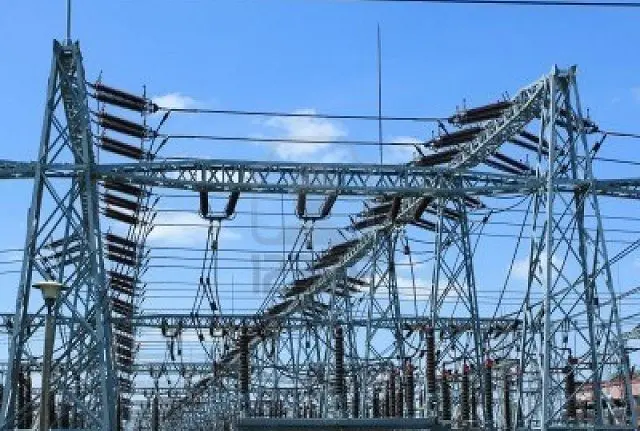
IN spite of ongoing epileptic power supply across the country, revenue collection by eleven electricity distribution companies, DisCos rose by 30 percent in the first nine months of 2023 to N782.74 billion when compared to N598.13 billion collected over similar period in 2022, latest data from the Nigerian Electricity Regulatory Commission, NERC, has shown.
The data also showed that collection efficiency improved by three percentage points, rising to 73.6 percent recorded in the first nine months of 2023 when compared to 70.12 percent collection efficiency recorded in the first nine months of 2022.
On a month-on-month basis, revenue collection in the month of September 2023 rose by N8.49 billion or 9.9 percent to N94 billion from N85.51 billion recorded in August 2023.
Despite the increased collection efficiency in 2023, NERC data however indicated that revenue shortfall by the DisCos rose to N503.13 billion in the months of January to September 2023, compared to revenue shortfall of N268.31 billion recorded over similar period in 2022.
The revenue shortfalls in addition to the Federal Government’s decision to freeze electricity tariff increase last year, have increased electricity subsidies payable by the government to about N600 billion for 2023 and a projection of N1.6 trillion for 2024.
The situation has led to growing calls for the removal of electricity subsidies and institution of a cost reflective tariff for the market.
Speaking on the revenue collected from consumers, the Chairman, Energy Consumers Association of Nigeria, Chijoke James lamented that while operators and experts were fixated on the amount of “money collected or not collected by the DisCos, they forget that services have remained very poor.
“They talk of cost reflective tariff as if we have not had it before in the industry. The question is, did all the tariff increments approved by NERC at any point lead to improvement in electricity supply? The big answer is no. There is no desire to improve supply. All the owners are looking for is how to collect more money from customers without improving services”, he added.
But other stakeholders in the Nigerian Electricity Supply Industry, NESI, in a communiqué issued following the maiden edition of the NESI Market Participants and Stakeholders’ Roundtable in Abuja, noted that government continuing interventions in the market mean the market was not performing well.
The communiqué signed by Prof. Stephen Ogaji and Mr. Bode Fadipe stated that “NERC should implement a fair and cost-reflective tariff structure that encourages investment, ensures revenue sufficiency, and incentivizes efficient energy consumption.
“Cost reflective tariff should be treated as an output, not an input. DisCos should introduce energy efficiency programs and initiatives to encourage customers to adopt energy-saving practices and technologies. DisCos should expand the deployment of smart meters to improve billing accuracy, and revenue collection, and reduce electricity theft”.
Reacting to the financial state of the industry, the Convener and Executive Director, PowerUp Nigeria, Mr. Adetayo Adegbemle said the government cannot sustain the payments of electricity subsidies.
Adegbemle in a note to Vanguard explained that historically, “the Nigerian Government has been paying electricity subsidies to the Nigeria Electricity Supply Industry. This means that there is the Cost Reflective Tariff of supplying 1kWh (kilowatt hour), and the allowed tariff that consumers are “allowed” to pay. This variance, otherwise called “subsidy” has now turned into an elephant in the chinaware shop”.
He noted that with rising inflation and the devaluation of the Naira having a massive impact on existing tariffs after the government ordered a freeze in MYTO review in July, the financial situation in the market was likely going to worsen next year.
He wrote: “In 2022, NERC rolled out the Multi Year Tariff Order that gradually phases out the subsidy so that Nigerians can start paying the cost reflective tariff. For instance, in the MYTO 2022, the cost reflective tariff, on the average, should be N68.42 per kilowatt hour (kWh), while the allowed tariff the DisCos were to charge was N59.89/kWh. With this, the Federal Government provided N8.53/kWh as subsidy. Between January and March 2023 alone (Q1, 2023), the total subsidy of N52.7bn was paid to the 11 Discos.
“The rationale behind the MYTO 2022, as approved by the regulators was premised on the fact that DisCos that are in highly urban centres are allowed to charge tariffs are near cost reflective due to evidence of high purchasing power and high consumption level in those areas, indicating that they are high-income consumers, while DisCos that are in areas with low income consumers are allowed to charge lower allowed tariff, therefore paying higher subsidy.
“This makes the subsidy regime to impact more on the low income bracket of consumers. It means people living in places under Abuja Disco, Ikeja Disco and Eko Disco were paying tariffs that are nearly cost reflective, while people living in places under Benin Disco, Yola and Ibadan Disco are paying much less”, he added.



0 Comments